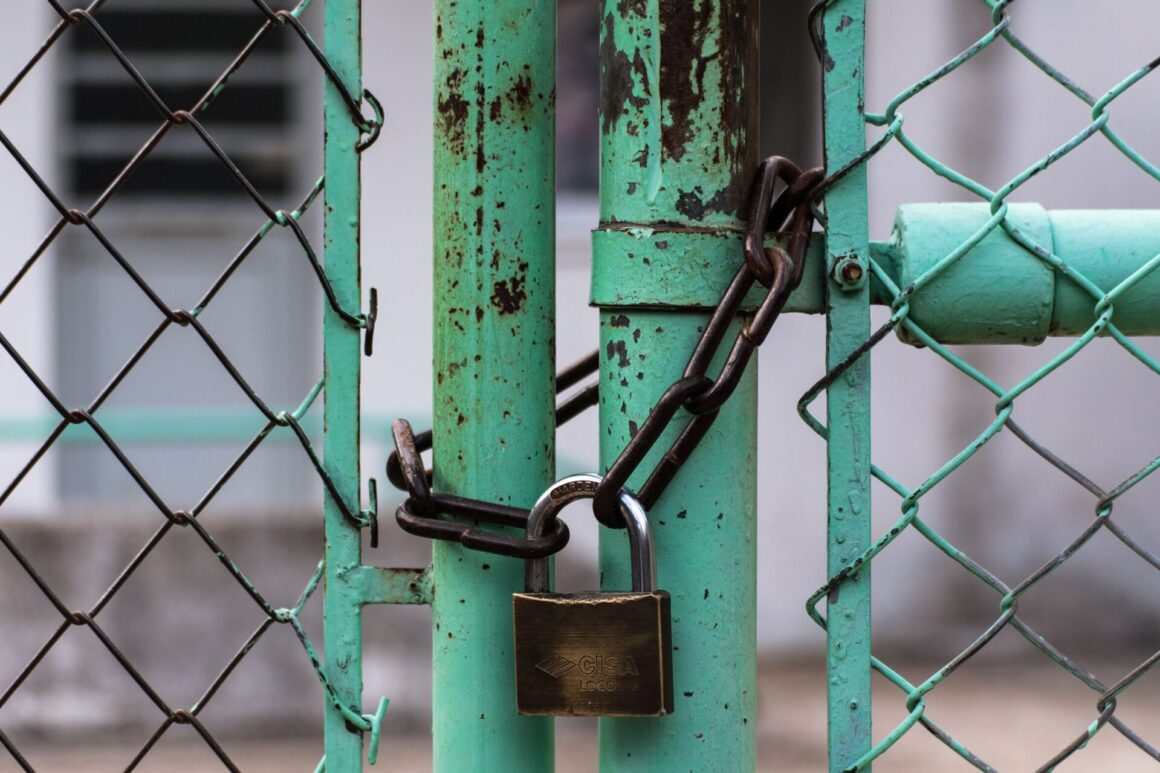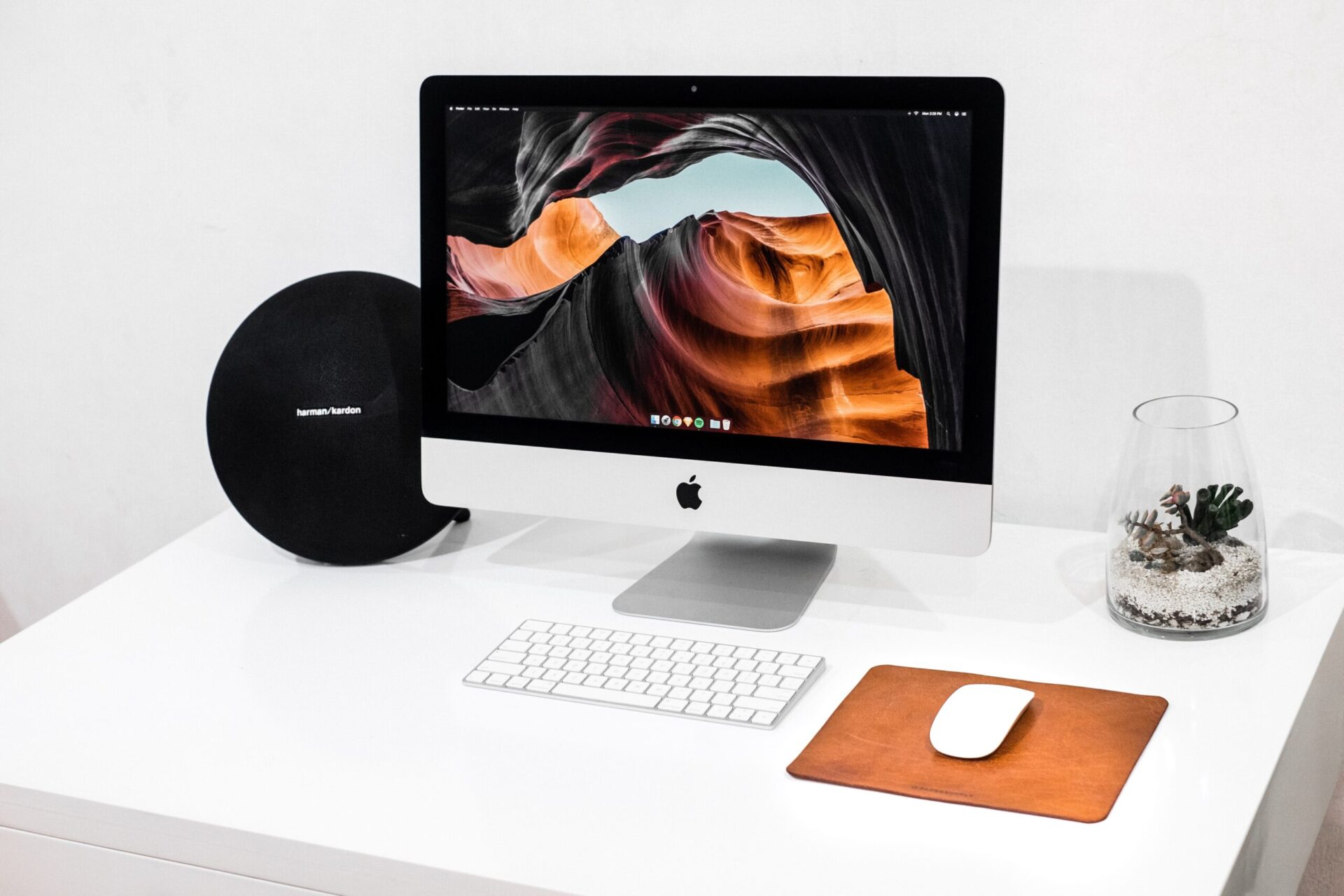Introduction
Brief Overview of the Importance of Account Security
In an increasingly digital world, the importance of account security cannot be overstated. With the majority of our personal and professional lives existing online, the stakes are higher than ever when it comes to safeguarding our digital presence. From social media accounts to your online banking, weak security protocols can put your sensitive information at risk, opening the door for identity theft, financial loss, and a host of other cybercrimes.
Introduction to Multi-Factor Authentication (MFA)
This brings us to the necessity of employing advanced security measures like Multi-Factor Authentication (MFA). Simply put, MFA provides an extra layer of security by requiring two or more verification methods—a combination of something you know (like a password), something you have (such as a mobile device), or something you are (biometrics like fingerprint or face ID). By setting up MFA, you ensure that even if a malicious actor gains access to one verification method, they won’t be able to gain full access to your account without clearing additional security hurdles.
What This Blog Post Will Cover
In the following sections of this blog post, we will delve into what Multi-Factor Authentication is, different types of MFA methods, and how you can set it up on various platforms. You’ll find a step-by-step guide to setting up MFA and learn about best practices that can bolster your account security. Whether you’re new to the concept or looking to refine your existing security protocols, this guide aims to provide comprehensive coverage on How to Set Up Multi-Factor Authentication for a Secure Login experience.
By the end of this article, you’ll have a robust understanding of Multi-Factor Authentication, its significance, and how to effectively implement it. Let’s secure your digital world, one login at a time.
What is Multi-Factor Authentication?
Definition of Multi-Factor Authentication (MFA)
Multi-Factor Authentication (MFA) is a security protocol that requires users to provide multiple forms of verification before gaining access to an account or system. Unlike traditional login methods that only require a single form of authentication, such as a password, MFA takes account security a step further by requiring at least two out of the three types of credentials: something you know (like a password), something you have (like a mobile device), or something you are (like a fingerprint).
Comparison with Single-Factor Authentication
To better understand the efficacy of MFA, let’s compare it with Single-Factor Authentication (SFA). In SFA, you only need one piece of evidence to prove your identity—usually a password. While convenient, this system has significant security flaws. If someone gains access to your password, they can easily access your account. With MFA, even if a malicious actor obtains one of your credentials, they would still need at least one more to break into your account. This added layer significantly enhances security, making it exponentially more difficult for unauthorized users to gain access.
The Importance of MFA in Modern Cybersecurity
In the modern cybersecurity landscape, where cyber-attacks are becoming increasingly sophisticated, MFA is no longer just an option; it’s a necessity. The utilization of multiple verification steps makes it challenging for attackers to compromise accounts, thereby offering a higher level of security. According to various studies, enabling MFA can prevent up to 99.9% of account compromise attacks. In industries where data is particularly sensitive, such as finance or healthcare, MFA can be a crucial line of defense against data breaches and unauthorized access.
By understanding what Multi-Factor Authentication is, how it compares to Single-Factor Authentication, and its critical role in modern cybersecurity, you’ll be better equipped to safeguard your online accounts and sensitive information. As you’ll see in the upcoming sections, setting up MFA is neither complicated nor time-consuming, but the added security it provides is invaluable.
Types of Multi-Factor Authentication Methods
In the realm of cybersecurity, there’s no one-size-fits-all approach to authentication. Different circumstances and risk levels may warrant different types of Multi-Factor Authentication methods. Generally, MFA methods fall into three primary categories: something you know, something you have, and something you are.
Something You Know (Passwords)
The most common form of authentication is the one based on something you know, typically a password. However, in the context of MFA, this “knowledge-based” authentication is just one part of the equation. While strong and unique passwords are essential, relying solely on them isn’t enough in today’s cybersecurity landscape. Passwords can be guessed, stolen, or even cracked through brute-force attacks, which is why they are often paired with additional authentication methods in MFA settings.
Something You Have (Hardware Token, Mobile Phone)
Another category in MFA is based on something you possess, like a hardware token or a mobile phone. Hardware tokens are physical devices that generate a time-based or event-based one-time password (OTP). You have to physically press a button on the token to generate this code, which you then input during the login process.
Mobile phones can also serve a similar function through SMS-based or app-based authentication. Once you try to log in, a unique code is sent to your mobile device, either through an SMS or an authentication app like Google Authenticator. You’ll need to input this code to access your account successfully.
Something You Are (Biometrics)
The third and perhaps most futuristic form of MFA relies on biometrics—unique physical characteristics like fingerprints, facial recognition, or even retinal scans. These authentication methods are based on something you are and thus, are extremely difficult to replicate or steal. Biometric authentication adds an incredibly robust layer of security but is often used in environments that require the highest security measures due to the sensitivity and uniqueness of biometric data.
By combining two or more of these authentication methods—something you know, something you have, and something you are—you create a robust security protocol that makes unauthorized access exceedingly difficult. Depending on your specific needs and the sensitivity of the data you’re protecting, you can tailor your MFA settings to provide the optimum level of security.
Stay tuned for the next section, where we’ll guide you through the step-by-step process of setting up Multi-Factor Authentication on various platforms.
Popular Platforms that Support MFA
Multi-Factor Authentication has become an industry standard in cybersecurity, with numerous platforms now offering this crucial feature. Here, we focus on a few popular platforms where setting up MFA can provide an additional layer of security to your digital assets.
Gmail
Google’s email service, Gmail, provides robust Multi-Factor Authentication options, including SMS-based, app-based, and even hardware key-based methods. Given the plethora of services connected to your Google account—like Google Drive, Google Photos, and others—securing it with MFA is highly recommended.
How to Enable MFA on Gmail:
- Go to Google Account Settings.
- Navigate to ‘Security’ on the left sidebar.
- Under ‘Signing in to Google,’ select ‘2-Step Verification’ and follow the prompts.
Outlook
Microsoft’s Outlook also supports a range of MFA options. You can receive verification codes via SMS, use an authenticator app, or even employ biometric methods if your device supports it.
How to Enable MFA on Outlook:
- Log into your Microsoft Account and go to the Security basics page.
- Click on ‘More security options.’
- Under ‘Two-step verification,’ click ‘Set up two-step verification’ and follow the steps.
Apple ID
Apple offers two-factor authentication for your Apple ID, which is used to access various Apple services like iCloud, iTunes, and the App Store. Apple employs a combination of something you know (your password) and something you have (a trusted device or phone number).
How to Enable MFA on Apple ID:
- Go to Apple ID account page and sign in.
- In the ‘Security’ section, click ‘Edit.’
- Click ‘Turn On Two-Factor Authentication’ and follow the on-screen instructions.
Others
Besides these giants, numerous other platforms support MFA, such as social media networks like Facebook and Twitter, financial institutions, and cloud storage services like Dropbox and OneDrive. Always check the security settings in your accounts to see if MFA is an option and consider enabling it for added security.
By taking a few minutes to enable Multi-Factor Authentication on these popular platforms, you substantially reduce the risk of unauthorized access to your accounts. Given the minimal time investment involved and the considerable security benefits, enabling MFA is a no-brainer for anyone serious about cybersecurity.
Stay tuned for our next section, where we will provide a step-by-step guide for setting up Multi-Factor Authentication.
A Step-by-Step Guide to Setting Up Multi-Factor Authentication
Now that you understand what Multi-Factor Authentication is and the different methods available, it’s time to actually set it up. This section will provide you with a detailed, step-by-step guide to setting up MFA, so you can fortify your accounts against unauthorized access.
Choosing the Right Method for You
Before diving into the steps, it’s crucial to choose the method that best suits your needs. If you’re someone who always has their mobile phone on hand, SMS or app-based authentication might be convenient for you. On the other hand, if you require heightened security, perhaps for a business account, you may opt for a hardware token.
Steps for Setting Up MFA
Below are the general steps involved in setting up MFA. The specific process may vary depending on the platform, but the fundamental principles are the same.
Via SMS
- Navigate to Security Settings: Access the security settings of the account you want to secure.
- Select MFA or Two-Step Verification: Choose the option that allows you to enable MFA.
- Choose SMS Authentication: Select the SMS option when prompted.
- Enter Phone Number: Input your mobile phone number and confirm.
- Receive and Enter OTP: You will receive a one-time password (OTP) via SMS. Input this code to finalize the setup.
Via an App
- Navigate to Security Settings: Access the account’s security settings.
- Select MFA or Two-Step Verification: Look for the MFA option.
- Choose App-Based Authentication: Choose the option for app-based authentication.
- Scan QR Code: Use your authentication app (Google Authenticator, Authy, etc.) to scan the QR code displayed.
- Verify: The app will generate a code. Enter this to finalize the setup.
Via a Hardware Token
- Navigate to Security Settings: As always, start by going to the security settings of the account.
- Select MFA or Two-Step Verification: Choose the appropriate option to enable MFA.
- Choose Hardware Token: Select this option if available.
- Insert and Press Token: Insert your hardware token into the device and press the button to generate an OTP.
- Enter OTP: Enter the generated OTP to complete the setup.
By following these steps, you can set up Multi-Factor Authentication on your accounts to substantially increase your security level. Given the rising threats in today’s digital world, taking the time to implement MFA is a small yet significant step towards safeguarding your online presence.
Best Practices for Multi-Factor Authentication
Once you’ve successfully set up Multi-Factor Authentication on your accounts, it’s essential to maintain it effectively. This section will walk you through some best practices for keeping your Multi-Factor Authentication settings robust and up-to-date.
Regularly Updating Your Authentication Methods
One of the keys to robust account security is the regular updating of your authentication methods. As technology evolves, so do the tactics used by cybercriminals. Make sure to update your passwords regularly and review the available authentication methods to ensure you’re using the most secure options. For example, if you’ve been using SMS-based authentication, consider switching to a more secure hardware token or biometric method if your platform supports it.
Using a Backup Method
Always have a backup authentication method in place, such as backup codes or an alternate phone number. In case you lose access to your primary authentication device—say, your mobile phone—a backup will ensure you can still access your account. Most platforms offer a way to generate backup codes, which you can print or save in a secure location.
The Pros and Cons of Various Methods
Each authentication method comes with its own set of advantages and disadvantages. Here’s a brief rundown:
- SMS Authentication
- Pros: Convenient and doesn’t require any additional hardware.
- Cons: Susceptible to SIM-swapping attacks and less secure than other methods.
- App-Based Authentication
- Pros: More secure than SMS and still quite convenient.
- Cons: Requires a smartphone and may be troublesome if you lose your device.
- Hardware Token
- Pros: Extremely secure and doesn’t rely on a mobile network.
- Cons: Additional cost for the hardware and less convenient to carry around.
- Biometrics
- Pros: Highly secure and convenient.
- Cons: Not always available as an option and potential privacy concerns.
By following these best practices for Multi-Factor Authentication, you can ensure that your accounts are as secure as possible. Regular updates, a good backup system, and a nuanced understanding of the pros and cons of various methods can help you maintain high-level security with minimal inconvenience.
How Does Multi-Factor Authentication Work?
Now that you have an understanding of what Multi-Factor Authentication is and how to set it up, you may be curious about the technical mechanisms that make it such an effective security measure. In this section, we’ll dive into a technical overview of how various elements come together for secure login through MFA.
Technical Overview
At its core, Multi-Factor Authentication aims to verify your identity by requiring multiple forms of verification. When you input your password—that’s the first factor. Then, an additional verification step kicks in, whether it’s a one-time password (OTP) sent to your phone, a push notification to an authentication app, or the use of a hardware token. Each layer involves separate and isolated systems, making it exponentially harder for an attacker to gain unauthorized access.
Here’s a simplified technical workflow:
- Initial Authentication Request: When a user attempts to log in, the server initially checks the first authentication factor, usually the username and password.
- Secondary Authentication Trigger: Once the first factor is verified, the server triggers the secondary authentication process.
- Verification Code Generation: For methods like OTP, a unique verification code is generated either by the server or a separate device like a hardware token.
- User Input: The user inputs this verification code, which the server then verifies.
- Access Granted or Denied: Depending on the verification, the server either grants or denies access to the user.
How Various Elements Come Together for Secure Login
Each authentication factor uses a separate channel or mechanism, thereby establishing isolated layers of security.
- Something You Know (Password): This is verified against a hashed and salted version stored on the server.
- Something You Have (Mobile or Hardware Token): In the case of SMS, a code is sent via the cellular network. For hardware tokens, the device itself generates a code, separate from your primary device.
- Something You Are (Biometrics): Biometric data is processed locally on your device and only a secure token, not the actual biometric data, is sent for verification.
These multiple layers interact but remain isolated, ensuring that even if one is compromised, the likelihood of breaching all layers is significantly reduced.
By understanding the technical intricacies of how Multi-Factor Authentication works, we can better appreciate its effectiveness as a security measure. This extra layer—or layers—of security can make all the difference in protecting your digital assets from unauthorized access.
Multi-Factor Authentication for Beginners
If you’ve made it this far and find yourself feeling a bit overwhelmed by the technical jargon, worry not! This section is designed specifically to break down the complexities of Multi-Factor Authentication (MFA) into a simple, understandable format. We’ll guide you through the steps to easily secure your online accounts with MFA, even if you’re not tech-savvy.
What is Multi-Factor Authentication, in Simple Terms?
Think of Multi-Factor Authentication like having two locks on your front door instead of just one. The first lock is your usual key (which is like your password), and the second lock could be a special code that only you know or something you physically have, like a unique key fob. This double-locking system makes it a lot harder for someone to break into your house—or in this case, your online account.
How to Set Up Multi-Factor Authentication
Here’s how to add that extra “lock” to your online “door,” step-by-step:
- Find the Right Spot
- Go to the website where you want extra security.
- Look for something like “Account Settings” or “Profile Settings.”
- Look for Security Options
- You’ll often see a “Security” tab or something similar.
- Click on it.
- Enable Extra Security
- Look for an option that says “Two-Step Verification,” “Two-Factor Authentication,” or “Multi-Factor Authentication.”
- Click on it and follow the instructions. You might have to enter your password again to confirm it’s really you.
- Choose Your Second “Lock”
- You’ll usually get choices like receiving a text message with a code, using an app that generates codes for you, or even using your fingerprint.
- Pick what’s easiest for you to use regularly.
- Test It Out
- Most services will make you do a test run to make sure everything is working well.
- You’ll enter your password first and then use your second “lock” to prove it’s you.
And there you have it! You’ve added an extra layer of security to your account, which will make it a lot harder for anyone who isn’t you to get in. Setting up Multi-Factor Authentication is a small step you can take for a significant boost in security, so don’t hesitate to enable it on all your important accounts.
Conclusion
As we wrap up this comprehensive guide on Multi-Factor Authentication, it’s important to recap why setting up MFA is not just an optional security feature but a necessary step in today’s digital landscape. With cyber threats growing more sophisticated, the traditional username and password are no longer enough to protect your online accounts. Multi-Factor Authentication adds a much-needed extra layer of security that substantially reduces the risk of unauthorized access.
Importance and Benefits
- Enhanced Security: MFA requires multiple forms of verification, making it incredibly difficult for cybercriminals to breach your account.
- Peace of Mind: Knowing that you’ve taken an extra step to protect your digital life can provide a significant sense of security.
- Protects Sensitive Information: Whether it’s your email, social media, or bank accounts, MFA helps keep your personal and financial information safe.
Take Action Now
If you haven’t set up MFA yet, now is the time to do so. It usually takes only a few minutes but provides long-lasting security benefits. Go through the settings of your most frequently used accounts and follow the step-by-step guides provided in this blog post to set up your Multi-Factor Authentication. It’s a small but powerful action that can have a significant impact on your online security.
We encourage you not to leave your cybersecurity to chance. Secure your online accounts with Multi-Factor Authentication today and enjoy the peace of mind that comes with knowing you’ve taken a proactive step to protect your digital life.
FAQs: Common Questions About Multi-Factor Authentication
As we conclude this guide on Multi-Factor Authentication (MFA), you may still have some questions. Here are answers to some frequently asked questions about MFA to provide you with a more comprehensive understanding.
What is Multi-Factor Authentication (MFA)?
Multi-Factor Authentication is a security measure that requires two or more forms of verification before granting access to an account. Instead of just asking for a username and password, MFA also requires additional information like a text code sent to your phone, a biometric scan, or a hardware token.
Is Multi-Factor Authentication Really Necessary?
Given the rising number of cyber threats and the sophistication of hacking techniques, MFA is becoming increasingly important. While a strong password is a good first step, adding another layer of security significantly reduces the likelihood of unauthorized access to your accounts.
Can Multi-Factor Authentication Be Hacked?
While MFA considerably boosts security, no system is entirely foolproof. Methods like SMS-based authentication can be susceptible to SIM-swapping attacks. However, using MFA makes hacking an account exponentially more difficult and time-consuming.
How Do I Set Up MFA?
Setting up MFA typically involves going to the account or security settings of the platform you’re using, finding the MFA option, and following the on-screen instructions. You’ll usually have the choice of enabling authentication through text messages, authentication apps, hardware tokens, or biometrics.
What If I Lose My Second Factor Device?
It’s essential to set up backup methods for MFA. Most platforms offer backup codes or the option to set up multiple authentication methods. If you lose your second factor device, you can usually regain access through these backup methods.
Does MFA Slow Down the Login Process?
While MFA does add an extra step to the login process, the few seconds spent on additional verification are trivial compared to the level of security you gain. In many cases, you can also set “trusted devices” that don’t require MFA after the first successful login, further streamlining the process.
What Are Backup Codes?
Backup codes are a set of codes that can be generated and saved when you set up MFA. These codes serve as a backup method to gain access to your account if you’re unable to use your primary second-factor device. Make sure to keep these codes in a secure place.
Do All Platforms Support MFA?
While the adoption of MFA is growing, not all platforms support it. It’s advisable to use services that offer MFA, especially for accounts that store sensitive or valuable information.
Should I Use MFA for All My Accounts?
Ideally, yes. Any account that supports MFA should have it enabled for optimal security. Prioritize setting up MFA for accounts that contain sensitive or important information like email, financial, and social media accounts.
We hope this FAQs section has helped to clear up any lingering questions you may have about Multi-Factor Authentication. For those looking to bolster their cybersecurity, setting up MFA is a straightforward yet effective step.









